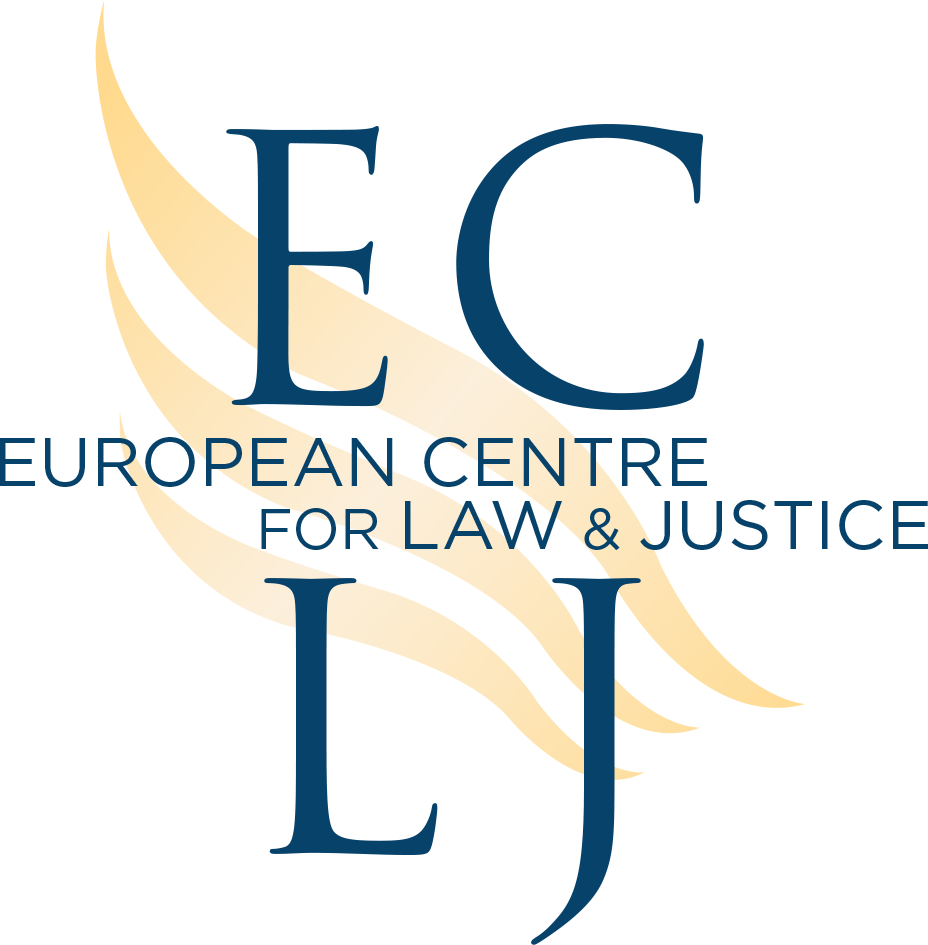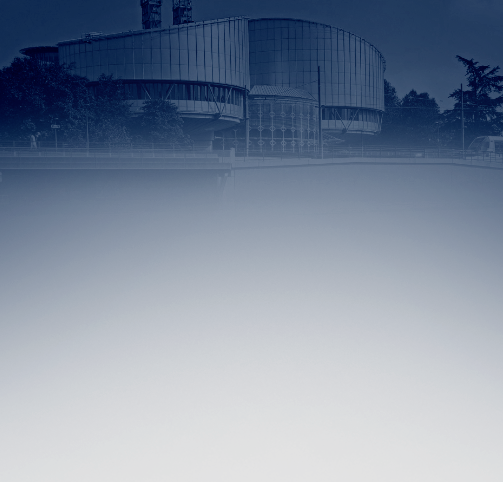A Comment on A, B and C vs. Ireland
By J.C. von Krempach, J.D.
In an earlier post I briefly related the good news that the European Court of Human Rights (ECtHR, ‘the Court’) has today issued a Judgment on the case of ‘A, B and C vs. Ireland’ in which it is clearly stated that the European Convention on Human Rights (ECHR) does not contain a “Right to Abortion”.
This judgment is thus not, as some had feared, a Pan-European version of the US Supreme Court’s ominous ‘Roe vs. Wade’ Decision. Like in ‘Roe vs. Wade’, the applicants relied on an excessively broad interpretation of their ‘Right to Privacy’ (which, contrary to the US Constitution, is explicitly foreseen in Article 8 of the ECHR). But this strategy remained unsuccessful. The ECtHR , in par. 214 of the Judgment clearly states that “Article 8 cannot … be interpreted as conferring a right to abortion”.
Foreseeably, the pro-abortion lobby will nevertheless attempt to point at the decision as their success, given that the Court did find a violation of Article 8 with regard to one of the three applicants. But that “violation” does not relate to the Irish ban on abortion as such. It only concerns the fact that there was no specific procedure in place to ascertain whether or not that applicant was entitled to a “lawful” abortion on the grounds that the pregnancy was endangering her life. (For more detail, see at the end of this post.) This, however, can be repaired by establishing a legal procedure. And indeed, such a procedure, if correctly drafted, would certainly have the effect of ruling out, once and for all times, preposterous claims such as that of the applicant in the present case, whose life (as it turned out) never was in danger.
On that account, therefore, the ECtHR ruling is a clear pro-life victory – and a very important one, too. Our congratulations go to the Government of Ireland, as well as to the European Centre for Law and Justice (ECLJ), the Family Research Council (FRC), the Society for the Protection of Unborn Children (SPUC), the Pro-Life Campaign (PLC) and Irish MEP Mrs. Kathy Sinnott, who all intervened as third parties.
Nevertheless, there are numerous elements not only in the Judgment, but also in the procedure preceding it, which are a cause for serious concerns. These concerns are related not so much to the substance of today’s decision, but to the way in which the ECtHR willingly offers itself to be used and manipulated by those who, using the flimsiest of allegations and the poorest of legal arguments, to promote an agenda that is not only not in conformity with, but indeed radically opposed to, any reasonable concept of “human rights”. For indeed, it seems that in the present case the three applicants were mere sock-puppets used by the pro-abortion NGOs intervening as third parties on their behalf.
It suffices to have a close look at the Statement of Facts which, for the sake of transparency, I quote in full from today’s Judgment:
“I THE CIRCUMSTANCES OF THE CASE
A. The first applicant (A)
13. On 28 February 2005 the first applicant travelled to England for an abortion as she believed that she was not entitled to an abortion in Ireland. She was 9½ weeks pregnant.
14. She had become pregnant unintentionally, believing her partner to be infertile. At the time she was unmarried, unemployed and living in poverty. She had four young children. The youngest was disabled and all children were in foster care as a result of problems she had experienced as an alcoholic. She had a history of depression during her first four pregnancies, and was battling depression at the time of her fifth pregnancy. During the year preceding her fifth pregnancy, she had remained sober and had been in constant contact with social workers with a view to regaining custody of her children. She considered that a further child at that moment of her life (with its attendant risk of post-natal depression and to her sobriety) would jeopardise her health and the successful reunification of her family. She decided to travel to England to have an abortion.
15. Delaying the abortion for three weeks, the first applicant borrowed the minimum amount of money for treatment in a private clinic and travel from a money lender (650 euros, “EUR”) at a high interest rate. She felt she had to travel to England alone and in secrecy, without alerting the social workers and without missing a contact visit with her children.
16. She travelled back to Ireland by plane the day after the abortion for her contact visit with her youngest child. While she had initially submitted that she was afraid to seek medical advice on return to Ireland, she subsequently clarified that, on the train returning from Dublin she began to bleed profusely, and an ambulance met the train. At a nearby hospital she underwent a dilation and curettage. She claims she experienced pain, nausea and bleeding for weeks thereafter but did not seek further medical advice.
17. Following the introduction of the present application, the first applicant became pregnant again and gave birth to her fifth child. She is struggling with depression, has custody of three of her children and two (including the disabled child) remain in care. She maintained that an abortion was the correct decision for her in 2005.
B. The second applicant (B)
18. On 17 January 2005 the second applicant travelled to England for an abortion believing that she was not entitled to an abortion in Ireland. She was 7 weeks pregnant.
19. The second applicant became pregnant unintentionally. She had taken the “morning-after pill” and was advised by two different doctors that there was a substantial risk of an ectopic pregnancy (a condition which cannot be diagnosed until 6-10 weeks of pregnancy). She was certain of her decision to travel to England for an abortion since she could not care for a child on her own at that time of her life. She waited several weeks until the counselling centre in Dublin opened after Christmas. She had difficulty meeting the costs of the travel and, not having a credit card, used a friend’s credit card to book the flights. She accepted that, by the time she travelled to England, it had been confirmed that it was not an ectopic pregnancy.
20. Once in England she did not list anyone as her next of kin or give an Irish address so as to be sure her family would not learn of the abortion. She travelled alone and stayed in London the night before the procedure to avoid missing her appointment as well as the night of the procedure, as she would have arrived back in Dublin too late for public transport and the medication rendered her unfit to drive home from Dublin airport. The clinic advised her to inform Irish doctors that she had had a miscarriage.
21. On her return to Ireland she started passing blood clots and two weeks later, being unsure of the legality of having travelled for an abortion, sought follow-up care in a clinic in Dublin affiliated to the English clinic.
C. The third applicant (C)
22. On 3 March 2005 the third applicant had an abortion in England believing that she could not establish her right to an abortion in Ireland. She was in her first trimester of pregnancy at the time.
23. Prior to that, she had been treated for 3 years with chemotherapy for a rare form of cancer. She had asked her doctor before the treatment about the implications of her illness as regards her desire to have children and was advised that it was not possible to predict the effect of pregnancy on her cancer and that, if she did become pregnant, it would be dangerous for the foetus if she were to have chemotherapy during the first trimester.
24. The cancer went into remission and the applicant unintentionally became pregnant. She was unaware of this fact when she underwent a series of tests for cancer, contraindicated during pregnancy. When she discovered she was pregnant, the first applicant consulted her General Practitioner (“GP”) as well as several medical consultants. She alleged that, as a result of the chilling effect of the Irish legal framework, she received insufficient information as to the impact of the pregnancy on her health and life and of her prior tests for cancer on the foetus.
25. She therefore researched the risks on the internet. Given the uncertainty about the risks involved, the third applicant travelled to England for an abortion. She maintained that she wanted a medical abortion (drugs to induce a miscarriage) as her pregnancy was at an early stage but that she could not find a clinic which would provide this treatment as she was a non-resident and because of the need for follow-up. She therefore alleged she had to wait a further 8 weeks until a surgical abortion was possible.
26. On returning to Ireland after the abortion, the third applicant suffered complications of an incomplete abortion, including prolonged bleeding and infection. She alleges that doctors provided inadequate medical care. She consulted her own GP several months after the abortion and her GP made no reference to the fact that she was visibly no longer pregnant.”
As one can see from this statement of facts, the three applications were brought directly to the ECtHR, without any attempt of using, let alone exhausting, the remedies available under Irish law. This alone would, under normal circumstances, have sufficed for the Court to declare them inadmissible, given that the exhaustion of domestic remedies is a pre-condition for filing a complaint with the Court. (cf. Art. 35 of the Convention)
As it appears, the three cases have never been heard by any Court prior to being brought to Strasbourg, nor has any judge ever ascertained the facts on which the three complaints were based. Indeed, the above-quoted circumstances of the case could be completely fictitious. I am not accusing anyone of anything, but it suffices to remember that in the US landmark case ‘Roe vs. Wade’, the plaintiff, Norma McCorvey, later admitted that the facts on which that decision was based had been a mere fabrication, and that she had been of two young and ambitious lawyers who were looking for a plaintiff with whom they could challenge the Texas state law prohibiting abortion. The pro-abortion lobby has a long standing record of fabricating facts and figures, and there were therefore, to say the least, good reasons for the ECtHR to be very cautious with any of the assertions made by the complainants in the present case.
Besides never having been verified, the “facts” on which the allegations against Ireland were built consisted mainly of subjective emotions, beliefs and sentiments. For example, the first applicant claimed to have belief that having another baby would have jeopardized her chances of reunifying her family. But in fact, that was not the case. It would indeed have unlawful for her social worker to turn her pregnancy into an obstacle for family reunification. The second applicant claimed that one motivation for her to have an abortion was that, having used the “morning-after-pill” she feared that her pregnancy could have developed into an ectopic pregnancy. But again, that was not true. In fact, it turned out that she had no ectopic pregnancy before she went to England to have an abortion. The third applicant claimed that she had feared that the continuation of her pregnancy put her life at risk. Yet again, this fear appears to have been unfounded. In any case, if there had been a real risk for her life, the law would not have prevented her from having an abortion. All three complainants claim to have been afraid of seeing a doctor when, having returned from their respective trips to England, they suffered from the complications often associated with abortions. Yet again, these fears were completely unfounded. The Irish law does not sanction abortions that have been performed abroad. In a certain sense, thus, what the three applicants tried to hold the Irish ban on abortion responsible for were nothing but unfounded and irrational fears.
Coming to speak of the physical sufferings experienced by each of the three women (profuse bleeding, infection, passing of blood clots…) it should be noted that such conditions are typical for women having undergone an abortion. It is strikingly absurd for the three applicants to hold the legal ban on abortion in Ireland responsible for these conditions when in actual fact they would never have experienced them, had they respected the law. The pro-abortion lobby often uses the argument that abortion must be legalised because illegal abortions are unsafe, whereas legal abortions are safe. As the case at hand shows, legal abortions are no less “unsafe” as illegal ones. Indeed, if anyone can be held responsible for the physical sufferings of the three complainants, it must be the practitioners who performed the abortions, or the abortion clinics employing them. The reference to an “incomplete abortion” in the case of the third applicant does suggest that in her case there could have been some kind of medical malpractice. But neither she nor any of the other two applicants seem to have taken any legal action against the respective abortion facilities. Instead, all three used their physical sufferings to suggest that Ireland had breached the ECHR. A bit far-fetched, isn’t it?
Against this background, one cannot help suspecting that this whole litigation never had the purpose of obtaining redress for any real inconveniences suffered. Instead it seems that all three complaints had been somehow planned and fabricated with the sole purpose of challenging the Irish ban on abortions before the ECtHR. And it is frightening that the Court so readily accepted to play this game.
To put this into a larger context: the ECtHR, which is composed of 47 judges, currently has a backlog of ca; 120.000 complaints, with ca. 60.000 new complaints coming in every year. Statistically, this would mean that each of the judges would have to deal with 1.300 complaints per annum. But in actual fact the regular procedure foresees that a case must be heard by a Chamber composed of 7 judges, which again multiplies the workload of each judge. Now, in order to reduce the backlog, the Court has invented a procedure that allows it to reject as inadmissible a complaint by means of an “administrative procedure”. That means that the complainant receives a letter of roughly twelve lines, informing him that judge XYZ has reviewed his complaint and found it inadmissible. No explanation at all is given as to the grounds of such decision, except a pre-fabricated statement that “the conditions of admissibility were not met”. In addition to that, the complainant is kindly requested not to write any further letters to the Court with regard to his complaints, as such letters will not be answered anyway. Last but not least, the complainant is informed that the file will de discarded from the archives of the Court within one year.
Such is the treatment the ECtHR reserves for the overwhelming majority of incoming complaints (roughly 80%), and even of the remainder a majority is, after deliberation, rejected as inadmissible. Only a small minority of cases are actually examined according to the regular procedure. One has good reasons to believe that many of those unsuccessful complaints have much more substance to offer than the rather flimsy facts submitted by the three applicants in the case of ‘A, B and C vs. Ireland’. Also, it may be that many of the applicants whose cases will never be heard have suffered more than the “distress”, “fear” or “uncertainty” brought forward by these three applicants.
Of course, one will never know exactly, given that the ECtHR, through the rapid distruction of files, destroys the traces of its own activities. But against the backdrop of a number of highly controversial decisions that the Court has adopted in recent years, there is strong reason to suspect that the Court has a policy of systematically picking and choosing cases that might help it to promote a controversial social agenda, including abortion, homosexuality, the promotion of controversial techniques of artificial procreation, and similar. But the function the ECHR foresees for the Court is to oversee the application of committments willingly and knowingly made by the State Parties, not to impose on them a radical agenda that they would not have chosen for themselves.
While one must be glad about today’s judgement, the way in which the ECtHR operates today must be a reason for grave concern for anyone seriously and genuinely committed to the protection of human rights. In the specific context of abortion, it has long been clear that this Court is inapt to make a meaningful and positive contribution to protecting the Right to Life of those who are most in need of such protection. But at least it today did not succumb to the pressures of those who wanted it to “discover”, hidden in the penumbral fringes of the Convention, a “Right to Abortion” that would oblige any Member State to legalise the killing of the unborn.
That clarifies matters. It is the legislators of each Member State that have competence to legislate on abortion. It is these legislators which the pro-life movement must seek to address.
One final (but important) remark: the Irish Constitution does not guarantee any “Right to Abortion” under any circumstances. In that context, the ECtHR seems to have misinterpreted the Irish law. What it foresees is merely that which is also recognised by the natural law of morality: in cases where a pregnant women requires treatment against a disease (e.g. cancer), such treatment (e.g. chemotherapy) may be given to her even if it may, as an unwanted collateral effect, cause the loss of the unborn child. A directly willed abortion, by contrast, is never morally admissible, given that pregnancy itself is not a disease.
It thus seems that the third applicant (and, following her, the Court) completely distorted and confused the facts of the case. Had the applicant been in need of another cycle of chemotherapy, she would (also under current Irish law) have been entitled to receive it. Indeed, withholding such treatment from her would certainly have raised an issue under Article 2 of the Convention (i.e., the third applicant’s Right to Life). But this does not seem to have been the case. (Yet again, we notice how regrettable it is that the Court made this judgment without ascertaining the facts…) No chemotherapy was withheld from the applicant, nor was the loss of the unborn child caused by any chemotherapy or other treatment. Instead, the woman’s decision to have abortion was based on the irrational and unfounded assumption that the pregnancy might cause her cancer to recommence. This irrational thought would never have sufficed as a ground for “legal” abortion – especially not in a system where, as the ECtHR requests, the eligibility of a woman for having recourse to abortion on grounds of a risk for her life must be ascertained on the basis of objective criteria. One does not see, therefore, how the existence of such a system would ever have resulted in the applicant having access to a “lawful” abortion in Ireland….









